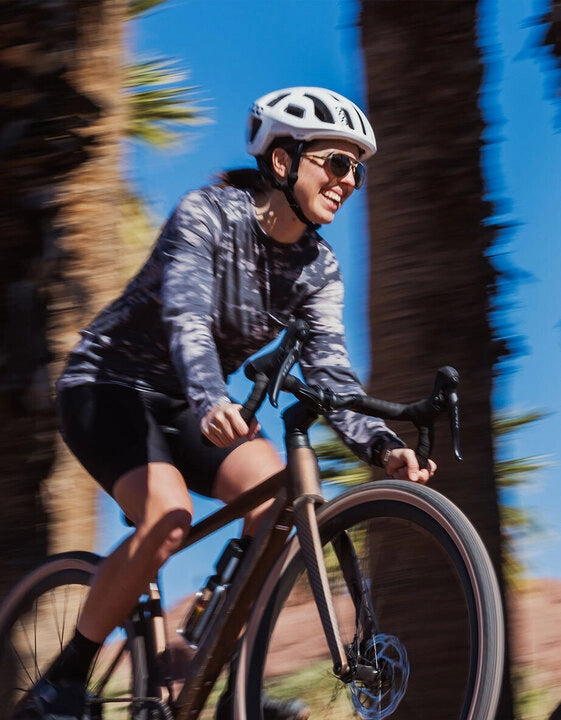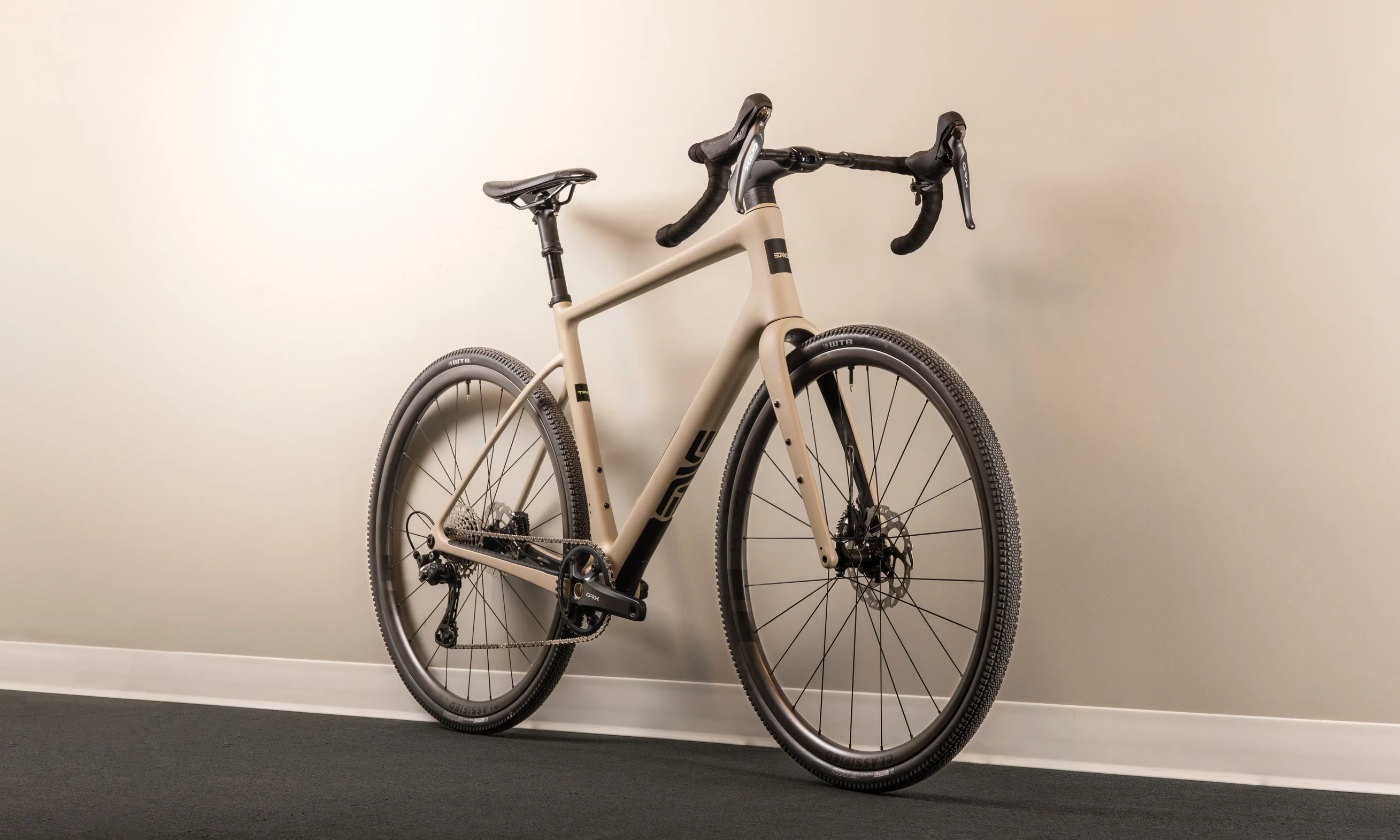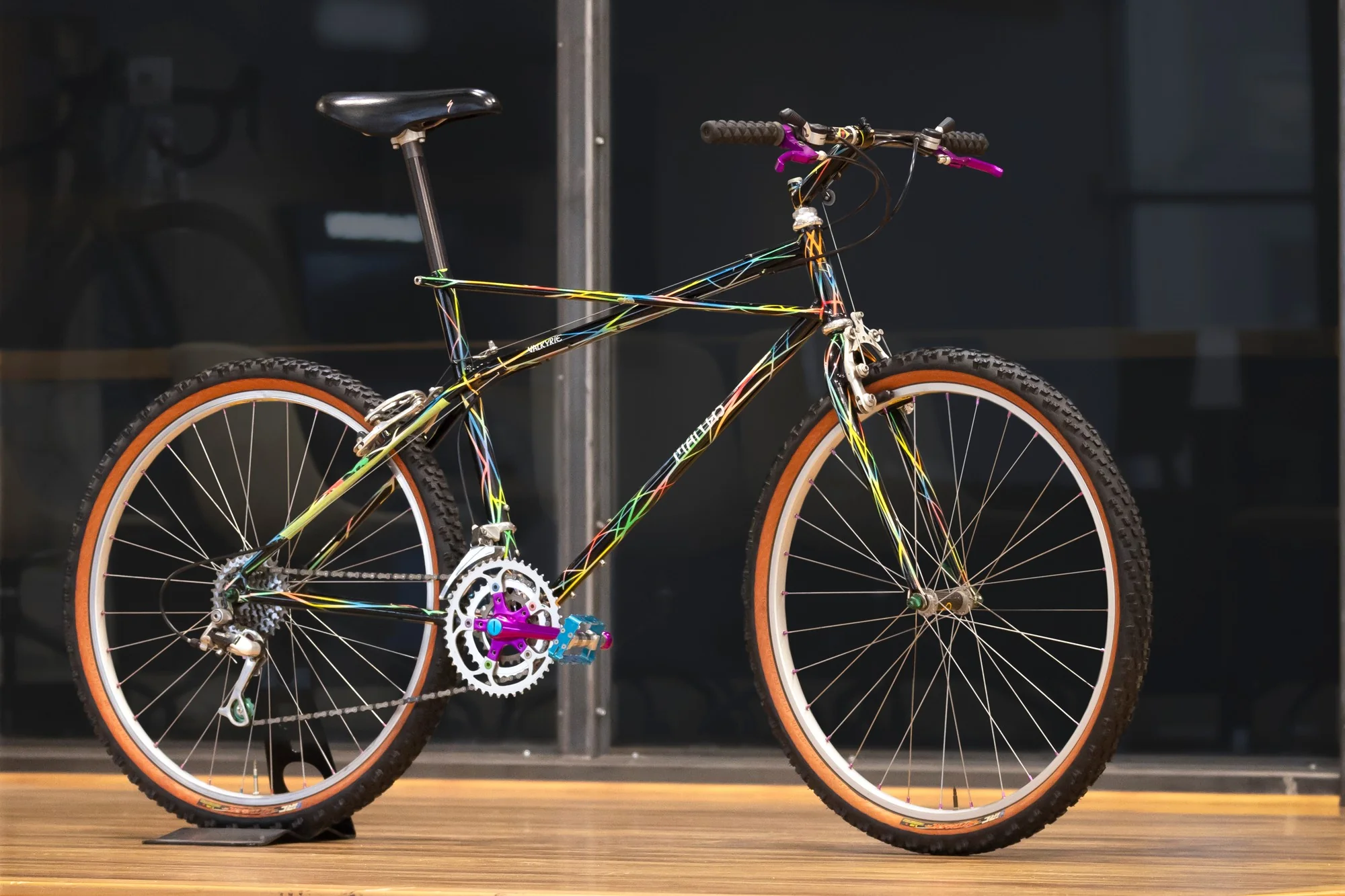I have a theory that bikes named after legendary racers are cursed to fall into obscurity. LeMond, Boardman, and Cipollini are good examples. Eddy Merckx’s namesake brand is perhaps an exception — it sponsored big teams like 7-Eleven and Quick-Step — but in its current form, Merckx bikes aren’t exactly topics of conversation.
The trick then, is to start a brand that doesn’t carry your name. Aurum was started by racing legends Alberto Contador and Ivan Basso, and it released its first bike, the Magma, in late 2020. This one I have in the studio is the first example that I’ve seen in person. I'm pretty impressed with the finish and how it rides. With some luck, Aurum might just stick around because I think the Magma has the chops to hang with some of the established favorites. Let’s take a closer look at the Magma, and you can tell me if you agree or not!
[button]Shop Road Bikes[/button]
Don’t Name a Brand After Yourself
Alberto Contador and Ivan Basso both have a long history of racing at the highest level of the sport. If you don’t know, both rose to prominence in the ‘00s, hailed as potential successors to a retiring Lance Armstrong. This Aurum launch video has a lot of their old race footage:
Of the two, Contador reached the greatest heights, winning the Tour de France twice, the Giro d’Italia twice, and the Vuelta a España three times, as well as several other one-week stage races throughout his career. Basso was also a two-time Giro winner and was a major contender in Grand Tours throughout his career. The two rode together on multiple teams and became close friends. (They even own a skincare line together.)
For me, Contador in particular always stood out for the way he rode. He had a knack for animating races with explosive attacks. His amazing ability to climb out of the saddle at high cadences inspired younger me to train by standing up on climbs for 20 minutes at a time (I don’t recommend this). His performances won him the coveted Vélo d'Or award a record four times.
 Contador's trademark "pistolero" win salute.
Contador's trademark "pistolero" win salute.
Both riders, however, did not have spotless careers. Contador had his 2010 Tour win (where “chain-gate” also happened) and 2011 Giro win stripped after testing positive for clenbuterol. Basso received a two-year ban after the Operation Puerto doping case.
There's a lot more to both these stories, and this isn't the place to get into it. But like many riders of this era, fans will have strong feelings about them, positive or negative. Either way, Contador is one of the most successful Grand Tour riders ever. If his 2010-2011 results weren’t stripped, he would have won all three Grand Tours three times, which is insane.
Personally, I'm rather indifferent about both riders. Contador also used to celebrate wins with a shot from a finger pistol (his nickname was "El Pistolero"), which I found unbearably cringy. All this to say that I'd likely never buy a bike named “Contador” (or “Basso," but that's already taken anyway).
 Contador (left) and Basso riding the Aurum Magma.
Contador (left) and Basso riding the Aurum Magma.
It’s probably a good thing then that Contador and Basso don’t use their surnames for their brand. It helps sheds some baggage and gives the brand a cleaner start in life. Instead, they chose “Aurum,” which is Latin for “gold.” In their words, gold is “the material of winners” and it represents their drive to succeed. They also want their baby, the Aurum Magma, to “set the gold standard for high-end road bikes.” So does it?
The Magma Is Modern, but Not Too Modern
 The Magma is named for Mount Teide, a volcano in Tenerife in the Canary Islands, Spain. This is where Contador and Basso spent many hours testing and refining their new dream bike. They gathered a group of Spanish and Italian engineers to help them design it. The frame is manufactured in Taiwan, painted in Italy, and assembled at the Aurum facility in Pinto, Spain.
The Magma is named for Mount Teide, a volcano in Tenerife in the Canary Islands, Spain. This is where Contador and Basso spent many hours testing and refining their new dream bike. They gathered a group of Spanish and Italian engineers to help them design it. The frame is manufactured in Taiwan, painted in Italy, and assembled at the Aurum facility in Pinto, Spain.
With the aero arms race raging in the world of high-end road bikes, you’d probably expect the Magma to employ some sort of gimmick to set itself apart. Surprisingly though, the Magma just looks pretty normal. The frame uses a classic diamond shape, with no dropped seat stays, and only a mild amount of integration. Unlike many other high-end road bikes, it uses a traditional bar and stem and a round 27.2mm seatpost.
Contador explained: “Throughout our career, we would ask for small adjustments, small changes that would mean changing a stem, a different handlebar choice, or seatpost. So, one of our first priorities was to allow the rider to make sure they are using what suits them.”
 The cables are still internally routed, but they stay outside of the stem and headset. They route into a “head tunnel” on the headtube that is meant to be simpler and lighter than most internal routing setups. This means the Magma uses standard headset bearings and use any bar and stem you like. Adjusting your cockpit doesn't require extra work like rerouting or bleeding brake hoses.
The cables are still internally routed, but they stay outside of the stem and headset. They route into a “head tunnel” on the headtube that is meant to be simpler and lighter than most internal routing setups. This means the Magma uses standard headset bearings and use any bar and stem you like. Adjusting your cockpit doesn't require extra work like rerouting or bleeding brake hoses.
This is something I appreciate. I’m constantly swapping stems, changing my bar height, and generally tweaking my position, so having a more traditional non-integrated setup is incredibly valuable to me. It makes me happy that there are top-end bikes that have stuck to this classic and proven setup.
 Then there’s the paint. I’m a sucker for white bikes, and the Arctic White paint on this frame is beautiful and, to my eye, very high quality. It’s laid on thick, has depth, and looks like it will last. It’s also fairly understated. Maybe the Magma is too understated for some, but it’s perfect for those who want something unique without looking ostentatious.
Then there’s the paint. I’m a sucker for white bikes, and the Arctic White paint on this frame is beautiful and, to my eye, very high quality. It’s laid on thick, has depth, and looks like it will last. It’s also fairly understated. Maybe the Magma is too understated for some, but it’s perfect for those who want something unique without looking ostentatious.
They Wanted the Ultimate All-rounder
 The frame was made to respond to Contador's explosive climbing style. Photo: Aurum
The frame was made to respond to Contador's explosive climbing style. Photo: Aurum
Here’s my favorite quote from the Magma’s press materials, again from Contador: “We’ve spent so many hours riding it, fine-tuning it and thinking about how to make it better than all the sensational bikes we rode during our careers”
Contador and Bassa raced for some of the best teams in the World Tour, and the bikes they rode during their careers were the cream of the crop: the Specialized Tarmac, Trek Madone, Cannondale SuperSix EVO, Cervélo R-Series and S-Series, Giant TCR, and more. To say the Magma is designed to improve on all of these is a bold claim.
To excel as an all-rounder these days, a bike needs a solid blend of low weight, great handling, and aerodynamics. Starting with weight, a 54cm Magma frame is 805 grams. That’s light, but it’s not exceedingly light. For world-class climbers like Contador and Basso, you’d think weight would be a huge concern, but not so.
Contador explained why they didn’t chase grams: “Geometry and stiffness [are] much more important. A bike that responds when you go out of the saddle is faster than something light that isn’t rigid. This is even more important on the descents.”
Rigidity was one of the top priorities in the Magma’s design. It’s the main reason it doesn’t feature the dropped seatstays that have become common on most modern superbikes. For Contador, who has an explosive, out of the saddle climbing style, dropped seatstays don’t provide enough lateral stiffness.
 The larger, more traditional rear triangle allowed the designers to space the seatstays farther apart to increase rigidity. To maintain comfort, they’re thinned down so they can flex vertically to absorb shocks. Sure, it’s not as aero as a dropped seatstay design, but everything behind the rider is in dirty air anyway so it’s not a huge loss.
The larger, more traditional rear triangle allowed the designers to space the seatstays farther apart to increase rigidity. To maintain comfort, they’re thinned down so they can flex vertically to absorb shocks. Sure, it’s not as aero as a dropped seatstay design, but everything behind the rider is in dirty air anyway so it’s not a huge loss.
One cool detail is that the entire rear end is also molded as a single piece to maximize stiffness, and it’s tuned for each size to ensure that every size rides as Contador and Basso have intended. The physical tube diameters for each frame size are different too, to account for how frames of different sizes experience different loads and torsional forces due to changes in a rider’s center of gravity.
 The thin fork blades have subtle aero shaping and provide a bit of compliance.
The thin fork blades have subtle aero shaping and provide a bit of compliance.
As far as aerodynamics is concerned, the Magma is not a dedicated windcheater. It does still feature a few aero enhancements at the front end where it matters most. The headtube, downtube, and fork legs use Kammtail profiles that were designed using NACA (National Advisory Committee for Aeronautics) profiles and verified with CFD and wind tunnel testing. Of course, we normies without wind tunnels have no way of knowing how aero the Magma actually is compared to its competitors, but at least it’s something.
Finally, the geometry is optimized for 25-28mm tires, but it can fit tires up to 30mm. Ideally, I would have liked it to clear at least 32mm tires to keep up with other range toppers like the Specialized Tarmac SL7/SL8 (32mm) and Cervelo R5/S5 (34mm). But most competitive road riders these days are likely riding 28mm tires, so it’s not a huge deal.
The stack height is low (this 51cm has a 525 mm stack height) which I like. This example comes with a taller 20mm headset cover that keeps things looking nice and clean, but there is a shorter 8mm option for the stem slammers out there.
So How Does the Aurum Magma Ride?
 When I get on the pedals and really hammer, I come away with one key impression: it feels a lot like a Specialized Tarmac. That’s not critique. In fact, it’s a pretty high compliment. The Tarmac is the most popular road racing bike for good reason. The Magma feels stiff and direct like a premium race bike should. The SRAM Red AXS group and ENVE SES 4.5 wheels contribute a lot to that premium feel too.
When I get on the pedals and really hammer, I come away with one key impression: it feels a lot like a Specialized Tarmac. That’s not critique. In fact, it’s a pretty high compliment. The Tarmac is the most popular road racing bike for good reason. The Magma feels stiff and direct like a premium race bike should. The SRAM Red AXS group and ENVE SES 4.5 wheels contribute a lot to that premium feel too.
In terms of weight, maybe it could be lighter (it’s 16 lbs 12 oz), but you definitely don’t feel it when you’re riding it. The Magma feels just as snappy as my old Tarmac SL6 and SuperSix Hi-Mod. Is the rear end laterally stiffer as Contador claimed? Maybe. That’s hard to tell. But it’s definitely much stiffer than my current Specialized Aethos without feeling punishing.
So who’s it for?
[product-block handle="7553337065664-aurum-bikes-magma-red-axs-road-bike-2023-51cm"/]
It’s definitely for a rider who cares about performance. Someone chasing Strava PRs, joining fast group rides, or racing. But they also need to be the type of person who wants a top-of-the-line bike (new Magma frames retail for €4,099!) but doesn’t want a bike from one of the “regular” performance brands — Specialized, Trek, Cannondale, Cervelo, etc.
This rider wants something that stands out from what every other rider in their group is on. But they don't want to sacrifice performance just to be different. If that’s you, the Aurum Magma is probably a good choice. As an all-rounder, I can't see it having any trouble hanging with Tarmacs, Emondas, R5s, and SuperSixs.
 The Magma is built to be confidence-inspiring at high speed. Photo: Aurum
The Magma is built to be confidence-inspiring at high speed. Photo: Aurum
Upon its release, Contador did use the Magma to briefly take the everesting world record. Clearly, the bike can climb with the best. But everesting isn’t just about climbing fast. You need to descend fast too, and Contador made the classic claim every rider likes to make when they get a hot new bike. He said he nabbed a bunch of new downhill PRs and trophies on Strava, proving to him that this bike was everything he’d dreamed of in terms of handling.
If a bike can help a (retired) multi-time Grand Tour winner set new records and feel faster, then it can likely do the same for you.
[button]Shop Road Bikes[/button]

























